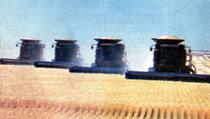
|
Situation
1 Oddly enough, at just about the same time that Jim won the lottery, he happened to pick up a magazine that suggested some American farms may be in jeopardy from Mother Nature. The article discussed the greenhouse effect and global climate change. It stated that levels of atmospheric carbon dioxide--a greenhouse gas--have increased significantly over the past several decades. Elevated levels of atmospheric carbon dioxide may have dramatic effects on the Earth's climate, such as changes in precipitation and temperature patterns. If predicted changes come about, in 50 years farmers may see significant declines in the yields of wheat crops in the areas Jim had considered for his farm. This news was disturbing because Jim had hoped to find a farm that would provide not only for him and his wife, but also for his children's future benefit as well. Jim and his wife have come to your firm, Earth Systems Science Environmental Research (ESSER) for technical advice. They want to make sure they are making a good investment. Using historical and predicted data provided in the "Remote Sensing" puzzle piece of this module, perform an Earth systems science analysis in order to determine how the yield of hard red winter wheat in Kansas will be affected by increased concentrations of atmospheric carbon dioxide as a result of its impacts on the four spheres. Provide recommendations or solutions as to whether or not Kansas wheat farmers will be able to maintain the current yields of this variety of wheat 50 years from now. |
Situation
2
As part of your evaluation, perform an Earth systems science analysis to determine the impacts of increased atmospheric carbon dioxide on the Earth's spheres. What--if any--changes have occurred in the Earth's spheres that support the hypothesis that global climate change is occurring at an increasingly rapid rate? How can such changes affect hard red winter wheat yield in Kansas? |
|
ESS Protocol
First, you will do an Earth system science analysis. Then, you will make predictions, based on the results of the ESS analysis, concerning the future of the growth of hard-red wheat in Kansas 50 years in the future. Following the steps below will help you to accomplish your task. Step 2 -- List what is needed. Step 3 -- Gather information to complete an ESS analysis.
Step 4 -- Present your findings.
Glossary ..|.. Related Links ..|.. References |.. PBL Model Home ..|.. Teacher Pages ..|.. Modules & Activities |
|
HTML code by Chris
Kreger
Maintained by ETE
Team
Last updated November 10, 2004
Some images © 2004 www.clipart.com
Privacy Statement and Copyright © 1997-2004 by Wheeling Jesuit University/NASA-supported Classroom of the Future. All rights reserved.
Center for Educational Technologies, Circuit Board/Apple graphic logo, and COTF Classroom of the Future logo are registered trademarks of Wheeling Jesuit University.

